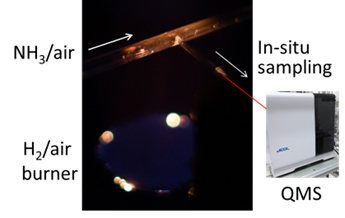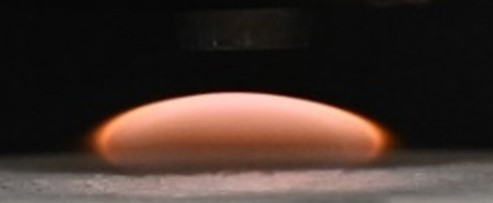
The use of ammonia derived from renewable energy sources as a fuel for decarbonizing energy systems has attracted attention. Since energy conversion by combustion provides high power per volume and weight of equipment and good load-following characteristics for large load changes, direct combustion of ammonia is expected to be used in various energy systems for power generation, heating, and transportation. On the other hand, the combustion characteristics of ammonia are significantly different from those of conventional hydrocarbons. It is necessary to explore combustion methods suitable for ammonia and to improve combustor designs. For these purposes, it is necessary to understand the fundamental combustion characteristics of ammonia, develop a combustion reaction model that can accurately predict these characteristics, and proceed with numerical combustion simulations.
In our laboratory, we are developing ammonia combustion reaction models with the aid of ab-initio computations. We are also measuring species of the reaction zone in a reactor (Figure 1 above) and the extinction conditions of laminar flames in a counterflow burner (Figure 1 below), and validating the ammonia combustion reaction models using these measurements. Since ammonia/hydrocarbon co-firing is important for realistic decarbonization, we are also conducting studies and modeling of the co-firing characteristics. The ammonia combustion reaction models developed in our laboratory are used in numerical combustion simulations for various combustion devices.
Figure 2 shows an example of numerical combustion simulations of an ammonia/diesel internal combustion engine in a collaborative research project with YANMAR HOLDINGS CO., LTD. The ammonia/n-heptane combustion reaction model developed in our laboratory was used in this simulation (n-heptane was used as a diesel surrogate fuel). The numerical combustion simulations successfully predicted the engine test results, including in-cylinder pressure histories and emission characteristics of NOx and unburned ammonia. The combustion behavior and NOx formation/reduction process in the engine cylinder were also successfully visualized by the simulations. The results are expected to the design and development of efficient and low-emission ammonia/diesel internal combustion engines.

 Fig. 1 (above) Species measurement of ammonia reaction zone in reactor and (below) counterflow flame of ammonia versus high-temperature air
Fig. 1 (above) Species measurement of ammonia reaction zone in reactor and (below) counterflow flame of ammonia versus high-temperature air
 Fig. 2 Visualization of combustion process of ammonia/diesel co-firing
Fig. 2 Visualization of combustion process of ammonia/diesel co-firing
-
1 The study of ammonia combustion for carbon neutrality
-
2 Research and development of semiconductor nanodevices
-
3 Quantum/molecular dynamics analyses for the transport phenomena of materials in polymer electrolyte fuel cells
-
4 Development of ammonia combustion reaction models and its application to numerical combustion simulation
